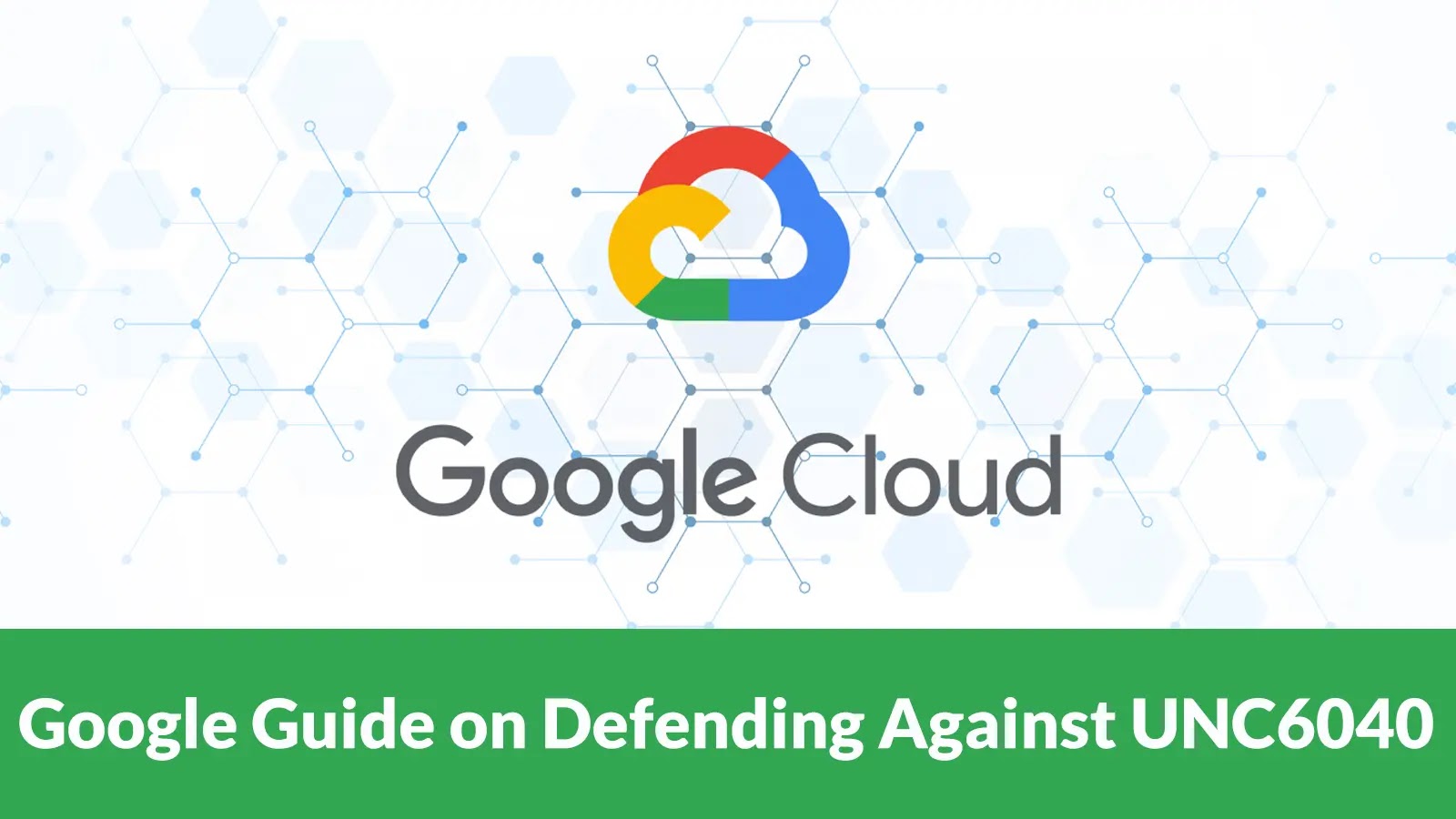
Google Releases Guide to Harden Security Strategy and Detection Capabilities Against UNC6040
Organizations face an ever-evolving threat landscape, and sophisticated adversaries continually refine their tactics. One such group, UNC6040, emerged in late 2024, quickly distinguishing itself through highly coordinated campaigns targeting cloud environments and intricate enterprise networks. Google has responded to this escalating threat by releasing a comprehensive guide designed to harden security strategies and bolster detection capabilities against this formidable actor.
Understanding UNC6040: A Formidable Adversary
UNC6040 is not a typical threat actor. Their methods demonstrate a deep understanding of modern infrastructure and a commitment to advanced evasion techniques. Initial investigations have revealed their propensity for leveraging sophisticated payload delivery mechanisms and custom malware loaders. This indicates a well-resourced and technically proficient group, posing a significant challenge to conventional security measures.
The group’s focus on cloud environments is particularly concerning. As more organizations migrate critical operations to the cloud, threat actors like UNC6040 adapt to exploit inherent complexities and potential misconfigurations. Their campaigns are characterized by a degree of coordination that suggests careful planning and resource allocation.
Google’s Strategic Response: Fortifying Defenses
Google’s newly published guide serves as a critical resource for security professionals. It’s a proactive measure, providing actionable intelligence and recommended best practices to counter UNC6040’s specific methodologies. The guide likely delves into:
- Enhanced Detection Strategies: Focusing on indicators of compromise (IoCs) and behavioral analytics specific to UNC6040’s custom malware and attack patterns.
- Cloud Security Posture Management: Recommendations for strengthening cloud configurations, access controls, and logging to mitigate common cloud vulnerabilities exploited by such groups.
- Network Hardening Techniques: Guidance on segmenting networks, implementing robust intrusion detection/prevention systems (IDS/IPS), and monitoring for unusual traffic patterns.
- Incident Response Playbooks: A framework for responding effectively to a UNC6040 compromise, minimizing dwell time and containing potential damage.
Key Tactics and Techniques Employed by UNC6040
While specific details from Google’s full guide are expansive, insights into UNC6040’s operations typically highlight:
- Advanced Payload Delivery: Moving beyond simple phishing, UNC6040 likely employs more sophisticated methods, possibly involving supply chain compromises, living-off-the-land binaries, or exploiting zero-day vulnerabilities (though specific CVEs linked directly to UNC6040’s initial activity were not immediately available in the provided source). Security teams should remain vigilant for new vulnerabilities. For general context on critical vulnerabilities, consider monitoring updates for remote code execution (RCE) flaws such as CVE-2023-46805 in Ivanti products, which threat actors frequently exploit.
- Custom Malware Loaders: The use of custom tools indicates an effort to evade standard antivirus and endpoint detection and response (EDR) solutions. This necessitates a focus on behavioral detection and threat hunting.
- Lateral Movement and Persistence: Once initial access is gained, UNC6040 likely employs techniques for lateral movement within networks and establishing persistence, aiming for deeper compromise and data exfiltration.
Remediation Actions and Proactive Defense
To effectively counter sophisticated groups like UNC6040, organizations must adopt a proactive and multi-layered security approach. Based on the understanding of such threats, consider the following actions:
- Implement Strong Identity and Access Management (IAM): Enforce multi-factor authentication (MFA) everywhere, employ least privilege principles, and regularly audit access rights, especially for cloud resources.
- Regularly Patch and Update Systems: Maintain a rigorous patching schedule for all operating systems, applications, and network devices. This includes cloud-native services and third-party integrations.
- Enhance Cloud Security Monitoring: Utilize cloud security posture management (CSPM) tools and cloud workload protection platforms (CWPP) to continuously monitor configurations, detect anomalies, and identify misconfigurations.
- Improve Endpoint Detection and Response (EDR): Deploy advanced EDR solutions capable of behavioral analysis to identify and respond to custom malware and fileless attacks.
- Segment Networks: Isolate critical systems and sensitive data through network segmentation to limit lateral movement in case of a breach.
- Conduct Regular Security Audits and Penetration Tests: Proactively identify vulnerabilities and weaknesses in your infrastructure, particularly those related to cloud deployments.
- Security Awareness Training: Educate employees on identifying phishing attempts and practicing good security hygiene, as initial compromise often starts with human factors.
- Develop and Practice Incident Response Plans: Have a well-defined and tested incident response plan specifically for cloud incidents and sophisticated threat actor activity.
Tools for Detection and Mitigation
While the full Google guide would list specific tools, a general approach to countering advanced threats like UNC6040 should involve a combination of the following:
| Tool Name | Purpose | Link |
|---|---|---|
| Google Cloud Security Command Center (SCC) | Cloud security posture management, threat detection, asset inventory for Google Cloud | https://cloud.google.com/security-command-center |
| Endpoint Detection & Response (EDR) Platforms (e.g., CrowdStrike, SentinelOne) | Advanced threat detection, behavioral analysis, and response on endpoints | (Manufacturer sites) |
| Cloud Access Security Brokers (CASB) | Visibility and control over data in cloud applications, threat protection | (Manufacturer sites) |
| Security Information and Event Management (SIEM) Systems (e.g., Splunk, Microsoft Sentinel) | Centralized logging, correlation of security events, threat intelligence integration | (Manufacturer sites) |
| Vulnerability Management Solutions (e.g., Tenable, Qualys) | Identification and prioritization of vulnerabilities across IT infrastructure | (Manufacturer sites) |
Conclusion
The emergence of UNC6040 underscores the imperative for organizations to continuously adapt their cybersecurity defenses. Google’s guide provides critical insights and actionable steps to bolster security strategies and enhance detection capabilities against this sophisticated threat actor. By implementing the recommended practices and leveraging appropriate tools, security teams can significantly improve their resilience against advanced persistent threats and safeguard their cloud environments and enterprise networks.





